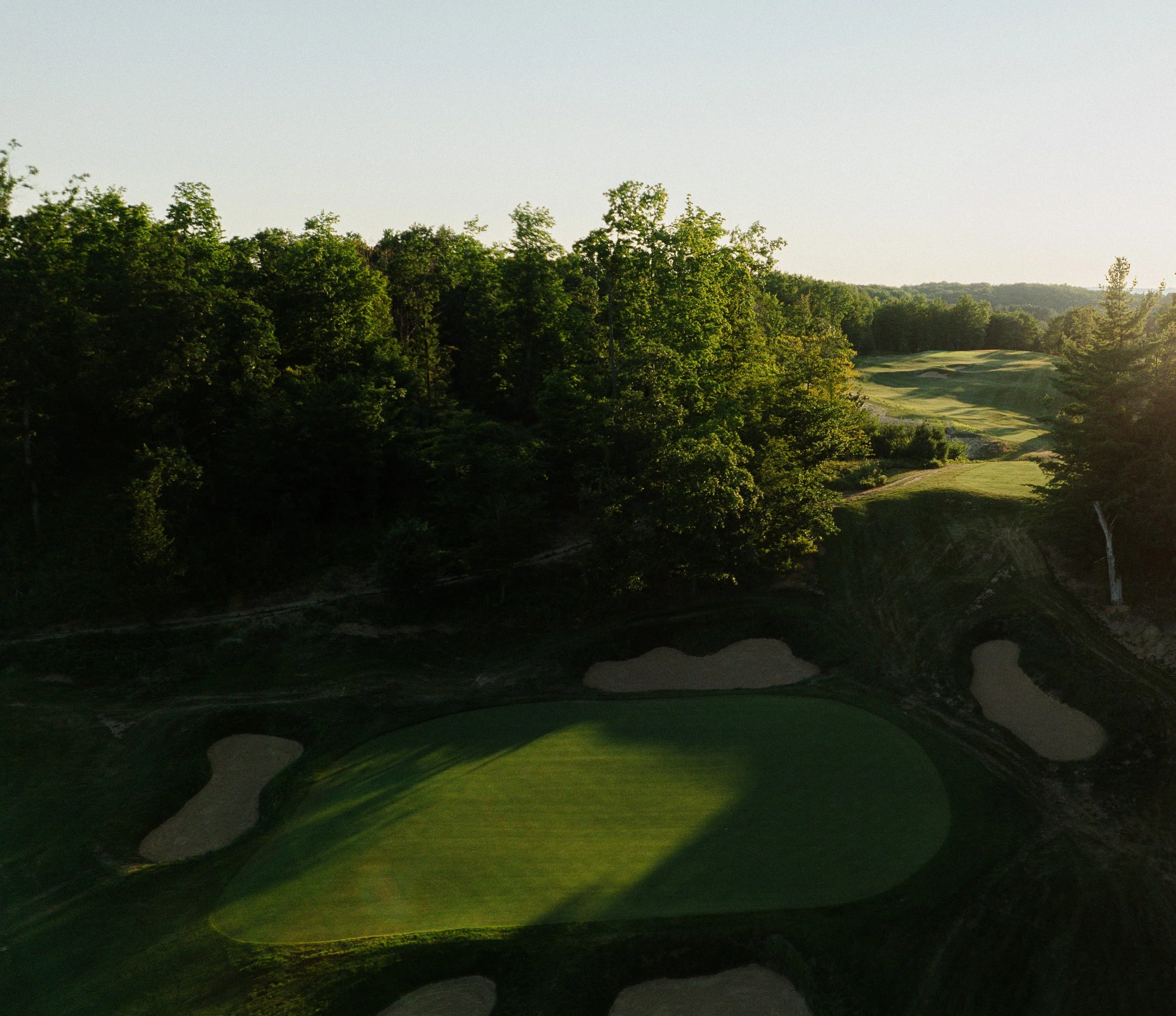Designer Tom Doak has Traverse City Homecoming
His first-ever course gets update 37 years later
By Tom Lang
Almost 40 years ago, Tom Doak was a young man in his mid-20s, a nomad, assisting Pete Dye at designing and building golf courses from here to there.
Putting down roots was not in his immediate plans.
When Doak was given his first solo shot at doing a course, it was to create High Pointe Golf Course just northeast of Traverse City.
He never left and – despite traveling and designing courses globally – Doak made his permanent home in northern Michigan.
“I thought eventually this would be a summer home and I’d live somewhere else the rest of the year,” Doak told me as part of a nearly-one-hour conversation back in May. “But my wife and family love it here, even through the winter, and I travel enough I don’t go stir crazy in the winter, so it works out.”
High Pointe opened as a public course in 1989 to great reviews, especially for the natural beauty of the back nine, but it closed in 2008 after the death of original owner Don Hayden combined with the tough financial times.
Now High Pointe is back – but with Doak’s vast experience thrown in to create 12 new holes – and has opened recently as an exclusive private golf club located south of main drag M-72 just east of Grand Traverse Resort.
Doak said it was not a complete shock that someone would come along to try reviving High Pointe – of which the front nine along the highway had become a hops farm. The idea of finding his own investor crossed his mind, too. It was just sitting there, the back nine left untouched he discovered, not far from his year-round home. Understandably, it was egging him on whenever he drove by. It being his first solo design tugged hard on the strings of nostalgia.
Five years ago, Doak met an owner of the hops farm who said they weren’t taking over the back nine of the old course, that business wasn’t booming like they thought it would.
“And that was the first time I thought, well maybe there is a scenario where this could come back,” Doak told me. “Obviously, I was very attached to it as my very first own project, but I had kind of written that off as long gone. But I still live here and to have my first golf course here about 20 minutes from my house is a lot nicer than flying to New Zeeland for one of my other nice courses,” he said with a chuckle.
“I had originally designed another nine holes (to the east) that were never pursued so I knew there was enough land there to have 18 holes behind the hops farm.”
Doak said when he was working for Dye, that Pete and Jack Nicklaus were the powerhouse designers at the time.
“They moved a ton of dirt, they (both) reshaped the entire golf course from wall to wall to create something different. And I just thought we’re starting to look too similar,” Doak said.
“So, at High Pointe the first time, with a fairly small budget, my idea was we’re leaving as much alone as we can. And if anything, I will error on the side of doing too little, because I was sick of seeing people error on the side of doing too much.”
Doak told me he leans a little bit toward allowing things to stay the way God made it but went on to say: “It’s so much more efficient building it; it’s so much more environmentally friendly building it that way if you don’t tear everything up. You don’t need five rows of irrigation to grow it back in… It just makes it simpler. It made it so I could shape …greens, tees and bunkers and I could do most of that myself in the summer, instead of having five others’ help.
“I’m lucky that High Pointe and a couple other projects established me as someone who could work that way, and if you had a good piece of land, he’s a good guy to talk to. And that’s been huge for my career because in the late ‘90s and 2000s, clients started thinking the same way I was thinking of, like, yes, I should find a really good piece of land in order to build a good golf course. I got a good chance to do that, and I’ve never looked back.”
Today’s rebuild of High Pointe was more stressful than he would have liked, because the Renaissance Golf Design team was busy with three other projects going on around the globe, and so when Doak would normally be home in Traverse City for a break, he really wasn’t home for dinner as much as he’d like as there was work needed to be done at High Pointe.
“It’s a very different golf course,” Doak said about the new course with the same name. “There are six holes from the original routing that we put back together pretty much the way they were. And one of the things we decided to do to make it a different project was move the clubhouse. It will be at the very east end, instead of turning in (on the road) where the hops farm is. The new clubhouse faces west and the starting holes go west and the finishing holes play east so you never have to play into the sun.
“So, the new holes are the first seven, and the 17th and 18th. What is new 8 and 9 are the old 10th and 11th. There’s two new holes behind them, and now 12 through 15 are the same number they always were. And there’s a different version of the old 18th hole that’s now 16 to get you back… then cross a little road to get to the new 17. So, yes, there’s most of the old back nine as part of the new course, but it’s not all the back nine anymore.”
Doak loves working with northern Michigan’s sandy soil, and no need to truck it in.
“I planted fescue grass fairways out there 37 years ago and everybody thought I was nuts; saying that doesn’t make any sense in this state and that nobody should do that,” he said. “I’m trying to make my reputation as a designer, not a grass guy. But by the same token, if you look at what are the top 20 modern golf courses in the country according to the magazines, half of them now have fescue fairways. All the courses in the Sandhills in Nebraska, the courses at Bandon Dunes (where he designed Pacific Dunes and Sheep Ranch), and Kingsley Club, here, went with fescue fairways. And Dan Lucas was there and is now the Superintendent here at High Pointe.
“So, we are having fescue fairways again and people are not giving me the same grief they were ages ago.
“With High Pointe, I’m hoping that people come to visit me here instead of me traveling so much. I’m 63 now and I’ve put a lot of miles on my body the last few years. So, it’s not like I’m going to park here and never go see any of my other courses, but I’ll be here a lot in the summer and I hope that’s a chance for people to come visit me and play golf.”
Coming full circle home.




